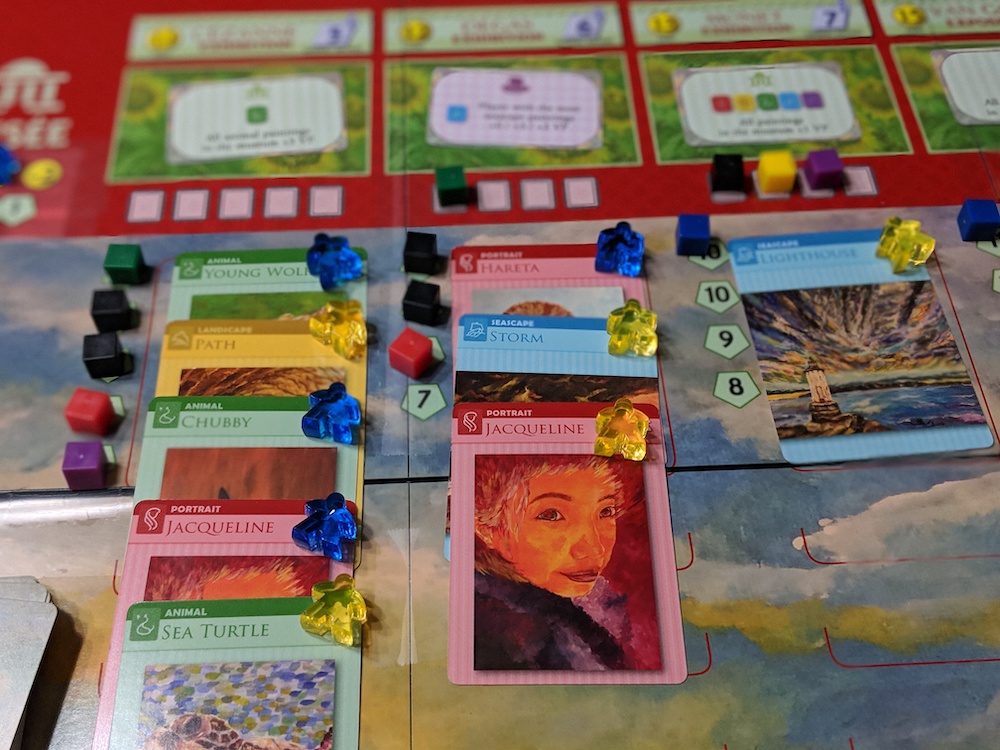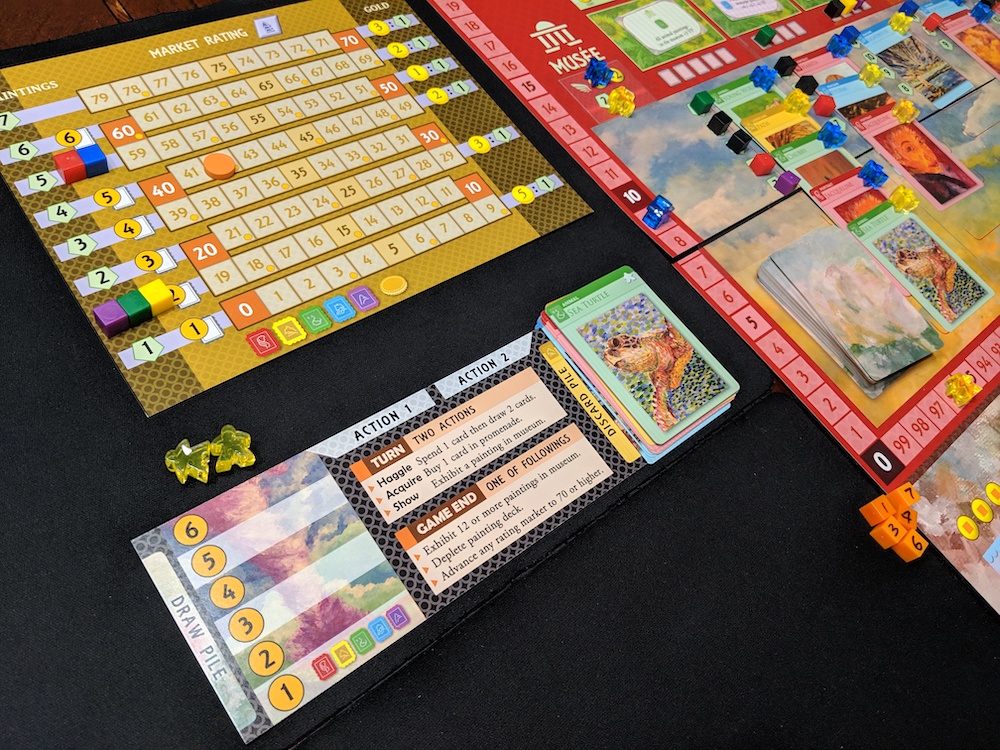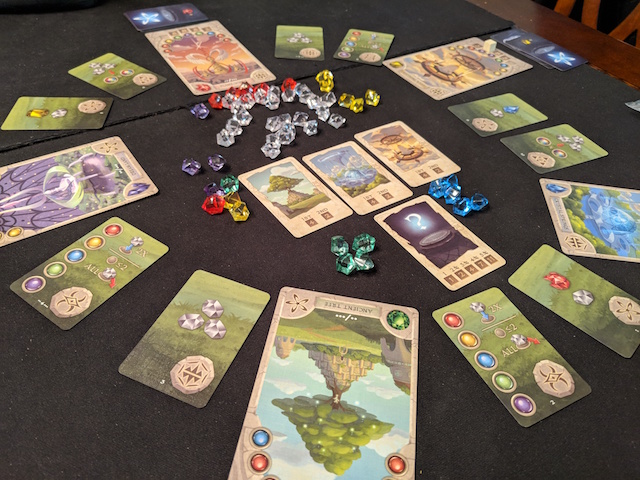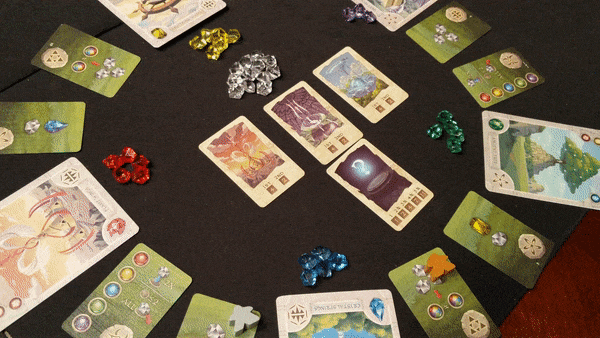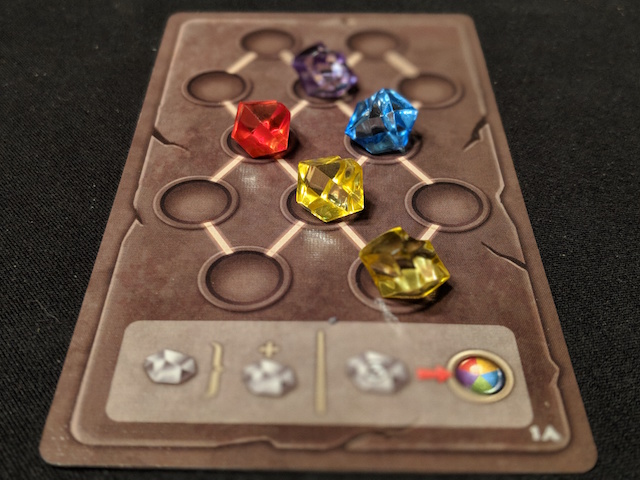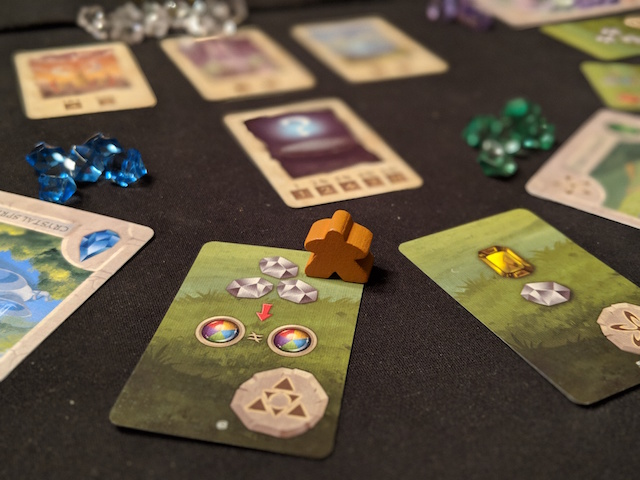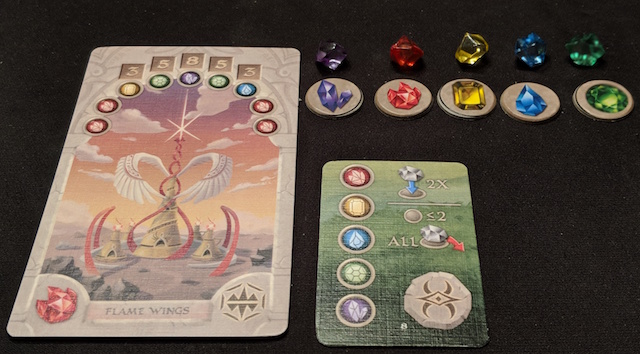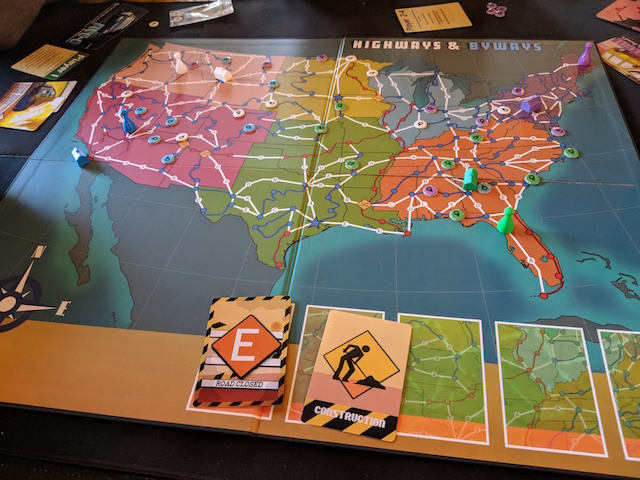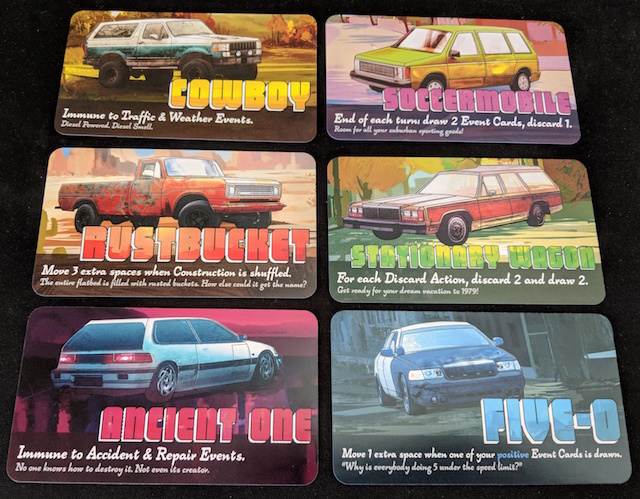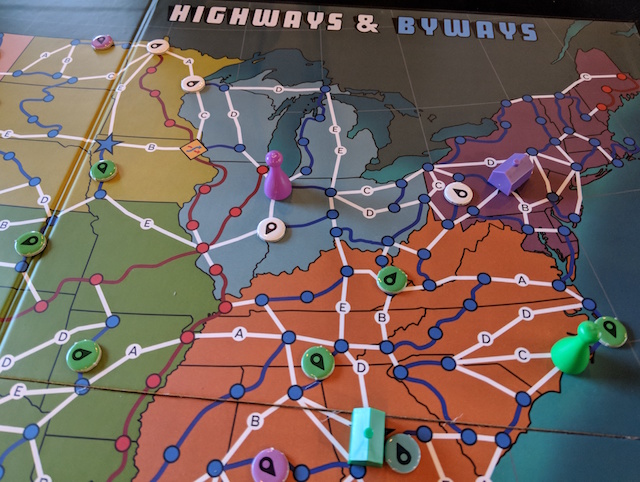Moonrakers is a fantastic blend of deck-building and negotiation and the three new expansions (and also a digital co-op mode) elevate the original’s game play. I love how easy they are to implement (new cards, boards, and tokens) and how much depth they add to the base game. Here’s the link to the Kickstarter (they’ve raised over $1m already!) and you can watch Becca Scott, Amy Vorpahl, Shea Parker, and me play the Nomad and Overload expansions below:
kickstarter
Good Lookin’ Kickstarters #19
It’s our final GLK of the year! Check out these great games now funding on Kickstarter and we’ll see you in 2022 for more Good Lookin’ Kickstarters!
Good Lookin’ Kickstarters #17
This episode brought to you by the letter “F.”
Good Lookin’ Kickstarters: Episode 8!
There are so many awesome Kickstarter board game projects right now! In our bi-weekly series on Good Time Society, Becca Scott and I talk about our favorites. Check it out!
Good Lookin’ Kickstarters: Episode 7!
I haven’t had the chance to update the site lately, but here’s the latest episode of Good Lookin’ Kickstarters! Find out what projects Becca and I are into these days.
Good Lookin’ Kickstarters
The amazing Becca Scott and I look at the coolest projects on Kickstarter. Check it out!
Veiled Fate Launch Day Livestream
I was honored to join the IV Studio team and special guests during their Kickstarter launch day to play an epic seven-player game of Veiled Fate. As I’ve stated before, I’m not a social deduction fan, but Veiled Fate is the second game this year (the other being The Search for Planet X) that has me re-thinking my tastes in games. I’d call it a strategic board game with a social deduction layer that is absolute blast to play.
Now on Kickstarter: Promenade
My favorite deck-building games (Trains, Clank! In! Space!, and Tyrants of the Underdark) have other mechanisms that make them more than just a card game. In Trains you build a network of train routes, Clank! In! Space! features push-your-luck and set collection, and Tyrants of the Underdark adds in area control. All of these games are based on deck-building and contain other elements that separate them from being another draw-five-cards-and-play Dominion clone.
Promenade from designer Ta-Te Wu and Sunrise Tornado Game Studio is a deck-building game that adds market manipulation to the mix. You play as an art connoisseur trying to amass the most expensive collection of paintings. You do this by acquiring paintings from the promenade and showing them in museums.
Players begin the game in typical deck-building fashion, with the same five basic gold (money) cards; however, in Promenade you’re also given five random painting cards. Painting cards serve two functions in the game: they can be used as money to purchase other painting/money cards or they can be displayed in the Museum for immediate victory points and possible end-game scoring.
The main board contains the Museum where all players display their paintings. These will earn them points based on whether or not an end-game goal is unlocked. Each exhibition in the Museum can display three to five paintings, and if any are filled up then that particular end-game scoring bonus is in play.
Players may perform two of three actions on their turn:
- Haggle: Discard a card and draw two more cards.
- Acquire: Spend the required amount for a card from the Promenade, either a painting from a gallery or a gold card from the Banque/Reserve.
- Show: Spend the required amount to add a painting card from your hand to an Exhibition in the Museum.
What makes Promenade so interesting and engaging is the Market Rating board. Each painting genre/color’s value is tracked here; each starts at one. So, if you draw five painting cards on your first turn, you have five gold to spend. Each time a painting is purchased from the Promenade or displayed in the Museum, its genre/color Market Rating will go up in value. Those same paintings that were worth only one gold each at the beginning will be worth more as the game progresses.
The game ends when there are 12 or more paintings in the museum, the main deck has been depleted, or one of the rating markers is 70 or higher.
End of game scoring consists of any end-game bonuses that were unlocked via the various exhibitions. You’ll also score points for your gold cards, depending on its current market value. Finally, you’ll get points for the painting cards in your deck, also depending on their current Market Rating.
Ta-Te Wu and Sunrise Tornado Game Studios have a hit on their hands in Promenade. It’s a unique, fun, and enjoyable deck-building game of art collecting that gamers will enjoy, even if they know nothing about art, investing, or investing in art. The market manipulation mechanism is my favorite part of Promenade; it adds a nice layer of depth to the game and makes it stand out among other deck builders.
Veteran deck-building players will appreciate how trashing cards happens: first, you can trash your starting cards or the 3-gold cards after using its bottom-card ability. Second, you can display a painting card in the museum, thus earning you immediate points and possibly end-game points. It’s a neat way to trash cards, since it earns you points, much like the Entomb action does in the underrated deck-builder Valley of the Kings. The set collection element comes into play here as well, since the various paintings will score points based on their final Market Rating.
The art collection theme works quite well in Promenade and the game is much more satisfying than if it would’ve been set in yet another generic fantasy world. The artwork is gorgeous; whenever I played it felt like I was wheeling and dealing valuable paintings. Everyone I played with was impressed by the game’s art and they were always blown away when they learned that the designer painted everything by himself.
Promenade has been a pleasant gaming surprise during the first quarter of 2019. While I’ve liked Ta-Te Wu’s previous Kickstarter games, I absolutely love Promenade. It takes the familiar deck-building mechanism and blends it with market manipulation into an entertaining game with a unique theme.
Thanks to Ta-Te Wu for providing a copy of Promenade for review. The Promenade Kickstarter campaign runs until May 12, 2019.
Now on Kickstarter: Mystery of the Temples
In the world of modern board gaming, bigger does not mean better. From Gryphon Games’ Bookshelf games to the small-box brilliance of the Tiny Epic series, games no longer need to be in Days of Wonder-sized boxes to provide a satisfying tabletop experience.
Mystery of the Temples from Deep Water Games is the latest game to outplay its humble size. Players are adventurers exploring wilderness, gathering crystals, and trying to break the curses placed on various temples.
The game features excellent components with linen-finished mini-Euro-sized cards and tarot-sized cards, 60 crystals in five colors, four meeples, and 24 broken curse marker cubes. I was surprised by how many things were packed into the box; it was easy to find and set up everything.
The object of the game is to score the most points by breaking curses, collecting runes, and gaining end-game bonuses via area majority and set collection.
On your turn you’ll move your meeple one to three spaces, either on the large temple cards or the smaller wilderness cards. Temple cards give you one specific crystal or you can opt to break a curse for points. Wilderness cards give you more options for gaining or exchanging crystals.
For the most part, you’ll move on the wilderness cards to collect crystals before moving onto the temple cards to break curses.
As you gather crystals, you’ll store them on your crystal grid. You’ll want to pay attention as you do this since the order in which you place them matters. Why? Because to break a temple’s curse, you must play the crystals in the exact order shown on the card. So if you want to break the yellow-yellow-blue curse for three points, those crystals must be connected to each other on your crystal grid.
Once you break a curse you’ll score victory points and gain a rune card. These cards offer special abilities and additional crystals whenever you land on a card that has the matching rune. As the game progresses, multiple rune cards may be trigger simultaneously.
After a player breaks five curses, then the rest of the round is played. Players then check for end game bonuses. First, three of the five temples offer bonuses points based on who has the most broken curse markers on them. Next, players check their rune cards and gain points based on the number of unique runes they’ve acquired. The player with the most points wins.
I was impressed upon seeing the quality of components inside Mystery of the Temples and was equally impressed by its game play. The turns are simple (move your meeple and either collect crystals or break a temple’s curse), but there are decisions to be made throughout the game.
Since players can’t share spaces (they leapfrog any player on a card), not everything you attempt will go according to plan. You can even block an opponent from a temple by landing on it before they do and it’s not uncommon to find another player beating you to a temple.
The crystal grid makes things interesting by forcing you to be aware of how you store your crystals. I like that you can’t just hoard crystals; you can only keep a dozen and if they’re not in the right order to break a curse, then you’ll have to spend clear crystals to re-arrange them.
I also liked the asymmetry built into the game; each player has a special ability they may use on their turn. These abilities may shape your early strategy and it’s a nice way to ensure everybody isn’t trying to land on the same cards in the opening rounds.
Don’t let the size of Mystery of the Temples fool you: the box may scream “filler,” but the game has enough meat on its bones to satisfy hobby gamers.
A note on color blind accessibility: if you follow me on Twitter, you know I’m an advocate for making games more accessible for color blind players. When Deep Water Games contacted me, they said they were updating the original game to be color-blind friendly, which was an absolute godsend.
The temple cards and wilderness cards have been replaced by cards with unique icons for each color. And instead of using different-colored crystals, you can use the included tokens with those same icons on them.
Kudos to Deep Water Games for making Mystery of the Temples color-blind friendly. I hope more publishers follow their lead in thinking about accessibility.
Thanks to Deep Water Games for providing a copy of Mystery of the Temples for review. Mystery of the Temples is currently funding on Kickstarter. The campaign runs until April 17th.
Now on Kickstarter: Highways & Byways
In Highways & Byways, you and your opponents have scored your first used cars and take to the road to explore America. You each start at a home base and have a set of routes you’re trying to complete and return home. Whoever does this first, wins.
The highlight of the game is the Driving Phase, where players are allowed to move up to six times on their turn. This is more than enough to complete your routes, but thanks to the random Construction and Event cards played before each turn, you may have to do some maneuvering around blocked paths or take a different route altogether.
Along with the point-to-point movement mechanism, there’s also the hand management aspect of Event cards. Each player has a hand of five Events and one is chosen randomly before their turn. A bad Event hinders movement while a good Event can help you overcome obstacles on your route. If you’re ever short on movement, you can discard one Event card to gain one movement action; it’s also a good way to get rid of those bad Events from your hand.
Each player also has their own special ability, which can make their travels go a lot smoother by ignoring some events, drawing extra Event cards, and so forth.
The game bills itself as a gateway-style game and if it was merely the Driving Stage, then I’d tend to agree. Unfortunately, the Planning Stage was entirely too long for my tastes. This is done before the Driving Stage and consists of a card draft that determines your routes for the Driving Stage.
The first player draws two cards from the deck, keeps one, then passes one to the next player. That player then draws one from the deck, chooses which one to keep, then passes the other to the following player, etc. This is done a total of 12 times and while I understand that players work on their Driving Stage strategy during this stage, it felt like an interminable wait before you could select your card.
Highways & Byways prototype
(Note: Since I was given an early prototype of the game, I shared my thoughts regarding the Driving Stage. Developer and publisher Brandon Rollins said that he may be adding a Planning Stage variant that would consist of each player drawing 14 route cards and simply discarding two of them. This is a welcome change and I hope he makes it an official variant during the Kickstarter campaign. Speaking of Rollins, he shares a lot of his game design process and thoughts on his website. If you’re an aspiring game designer, you should check out his site or follow one of his social media accounts.)
Overall, Highways & Byways offers a gateway-style experience during the Driving Stage and I’d like to see what, if any, tweaks are made to the Planning Stage to smooth out the game.
Thanks to Brandon Rollins for providing a copy of Highways & Byways for review. Highways & Byways is currently funding on Kickstarter. The campaign runs until Friday, April 20th.

